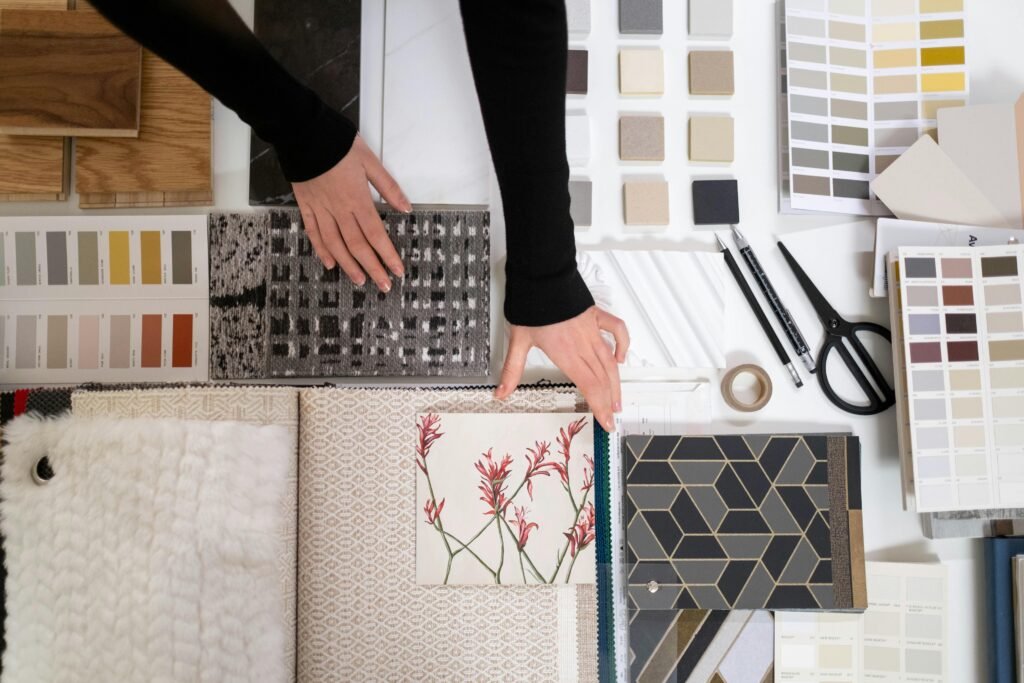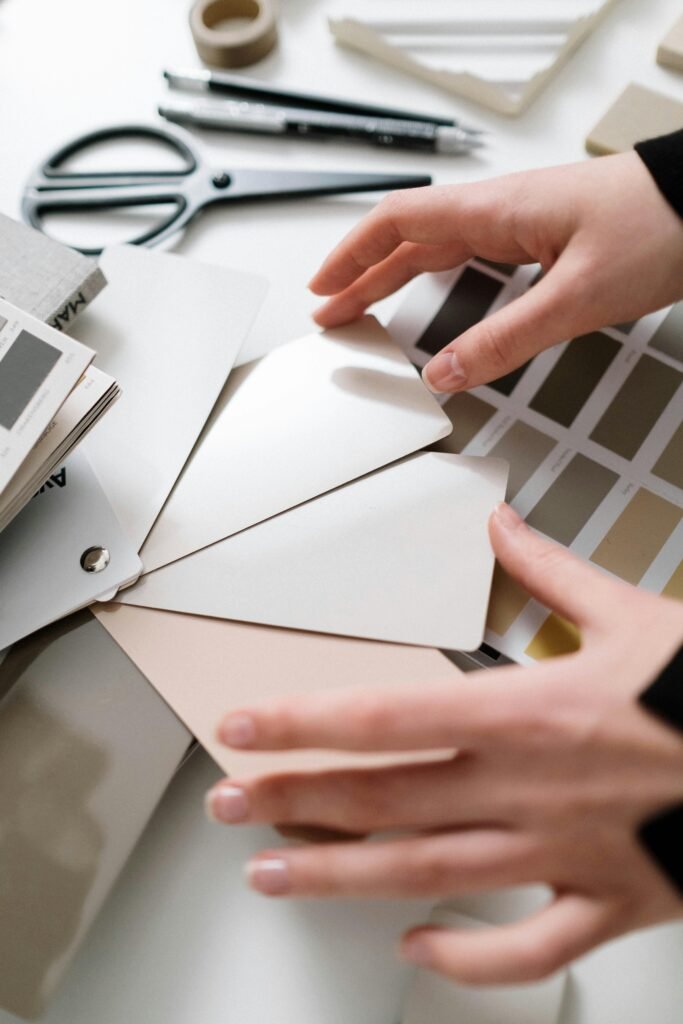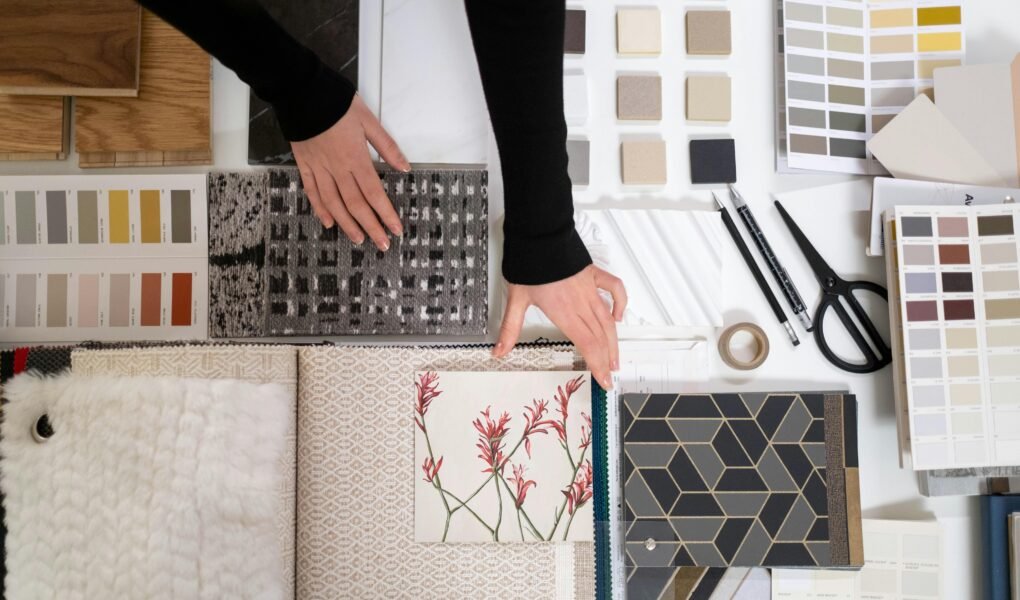Imagine stepping into a beautifully designed room filled with clean lines, sleek surfaces, and an air of simplicity. As you take in the space, your eyes are immediately drawn to the exquisite minimalist lighting fixtures that perfectly complement the overall aesthetic. This article explores the enduring allure of minimalist lighting and how it has become a timeless trend in interior design. From its ability to create a sense of tranquility to its unmatched versatility, minimalist lighting has become a must-have element for those looking to create a modern and sophisticated ambiance in their homes or office spaces.

1. What is Minimalist Lighting?
1.1 Definition
Minimalist lighting refers to a design approach that focuses on simplicity, clean lines, and the elimination of unnecessary elements. It involves using lighting fixtures and designs that are sleek, understated, and unobtrusive, allowing the light itself to take center stage. Minimalist lighting aims to create a sense of elegance and tranquility, while providing practical and well-designed illumination to enhance the overall ambiance of a space.
1.2 Characteristics
The key characteristics of minimalist lighting include a minimalist aesthetic, uncluttered design, and a focus on functionality. These lighting fixtures often feature geometric shapes, straight lines, and a lack of ornate features. Additionally, minimalist lighting tends to prioritize high-quality materials, neutral colors, and clean finishes. The goal is to create a timeless and versatile lighting design that seamlessly integrates into any interior space.
2. Historical Background
2.1 Origin of Minimalism
Minimalism as an art movement emerged in the late 1950s and early 1960s, originating in the United States. It was a reaction against the complexity and excesses of abstract expressionism, aiming to strip art down to its essential forms. The principles of simplicity, reduction, and functionality inherent in minimalism eventually made their way into other design fields, including lighting.
2.2 Evolution of Lighting Design
Over the years, lighting design has evolved from purely functional to a blend of aesthetics and practicality. Minimalism has played a significant role in this evolution, as designers began to explore sleek and minimalist forms of lighting fixtures. From the iconic designs of the mid-20th century to the contemporary minimalist lighting of today, the focus has shifted to creating lighting solutions that enhance the overall design of a space while maintaining a minimalist aesthetic.
3. Importance of Lighting in Interior Design
3.1 Setting the Mood and Ambiance
Lighting plays a crucial role in setting the mood and ambiance of a space. It can create a relaxing, intimate atmosphere in a bedroom, or a vibrant, energetic feel in a living room. Minimalist lighting, with its clean and understated design, allows for a versatile range of lighting options that can effortlessly adapt to different moods and activities.
3.2 Enhancing Architectural Features
Well-designed lighting can enhance the architectural features of a space and draw attention to specific elements. Minimalist lighting fixtures can be strategically placed to highlight architectural details such as exposed brick walls, beams, or unique ceiling designs. By using minimalist lighting, these features can become focal points in the room, adding depth and visual interest to the overall design.
3.3 Highlighting Artwork and Decor
Minimalist lighting serves as a perfect complement to artwork and decor. By using carefully positioned lights, artwork can be illuminated in a way that enhances its colors and textures. Minimalist lighting fixtures provide a clean and unobtrusive backdrop, allowing the artwork to take center stage. The right lighting can also create visual focal points, drawing attention to specific pieces and creating a gallery-like atmosphere.
4. The Advantages of Minimalist Lighting
4.1 Simplicity and Elegance
One of the main advantages of minimalist lighting is its simplicity and elegance. By eliminating unnecessary ornamentation and focusing on clean lines and geometric shapes, minimalist lighting fixtures exude a timeless beauty. They seamlessly integrate into any interior design style, from modern and contemporary to traditional and eclectic. The simplicity of these fixtures also allows them to remain visually appealing without overpowering the overall design of a space.
4.2 Flexibility and Adaptability
Another advantage of minimalist lighting is its flexibility and adaptability. These lighting fixtures can work well in various spaces, as they easily blend with different interior styles and design elements. Whether you have a minimalist living room or a more eclectic kitchen, minimalist lighting can harmonize with the existing decor and provide the necessary illumination while maintaining a cohesive aesthetic. This versatility makes minimalist lighting a popular choice for both residential and commercial spaces.
4.3 Space Optimization and Durability
Minimalist lighting fixtures are often designed with space optimization in mind. Their sleek and compact designs allow them to fit seamlessly in small spaces, making them ideal for apartments or rooms with limited square footage. Moreover, minimalist lighting fixtures are often made with durable materials that ensure longevity. This durability means that they can withstand the test of time and continue to provide functional and aesthetically pleasing lighting for years to come.

5. Types of Minimalist Lighting
5.1 Pendant Lights
Pendant lights are a popular choice for minimalist lighting. These fixtures are suspended from the ceiling, usually with a single cord or chain, and provide focused illumination in specific areas. Pendant lights are available in various shapes and sizes, ranging from simple and streamlined to sculptural and artistic. Their versatility and ability to add character to a space make them a favorite among designers and homeowners alike.
5.2 Wall Sconces
Wall sconces are another type of minimalist lighting that can add a touch of elegance and sophistication to any room. These fixtures are mounted to the wall and provide both ambient and task lighting. Wall sconces can be used to illuminate hallways, highlight artwork, or provide a soft, diffused glow in bedrooms or living rooms. Their sleek and unobtrusive design makes them a perfect choice for minimalist interiors.
5.3 Floor Lamps
Floor lamps offer a practical and stylish lighting solution, particularly in spaces where ceiling-mounted fixtures are not possible or desired. Minimalist floor lamps are typically tall and slender, with clean lines and a minimalistic aesthetic. They can provide both ambient and task lighting, and their portable nature allows for easy placement and rearrangement as needed. From sleek metal designs to minimalistic wooden lamps, floor lamps can truly enhance the overall minimalist look of a space.
5.4 Table Lamps
Table lamps are essential for adding localized lighting to specific areas, such as desks, side tables, or nightstands. Minimalist table lamps often feature simple and elegant designs, with clean lines and basic geometric shapes. They can be made from a variety of materials, including metal, glass, or even concrete, and are available in different sizes and heights to suit individual preferences and functional needs.
5.5 Track Lighting
Track lighting is a versatile option for minimalist lighting. It consists of a track system that holds multiple adjustable light fixtures, allowing for customizable and adaptable lighting solutions. Track lighting can be used to highlight artwork, create task lighting in kitchens or workspaces, or provide general lighting in larger rooms. Its sleek and unobtrusive design makes it a popular choice for minimalist interiors, providing a clean and modern look.
6. Materials and Finishes
6.1 Metal
Metal is a popular choice for minimalist lighting due to its durability, versatility, and clean aesthetic. Metal fixtures can range from brushed stainless steel to matte black or even polished brass, offering a wide range of options to suit different interior styles. Metal finishes provide a sleek and contemporary look, making them perfect for minimalist lighting designs.
6.2 Glass
Glass is another commonly used material in minimalist lighting. It offers a clean and transparent aesthetic, allowing the light to shine through and create a soft, diffused glow. Glass fixtures can range from clear and sleek to frosted or textured, adding visual interest to the design. Whether it’s a pendant light with a glass shade or a wall sconce with a glass diffuser, using glass in minimalist lighting can add a touch of elegance and sophistication.
6.3 Wood
Wood is a warm and natural material that can bring warmth and texture to minimalist lighting designs. Minimalist lighting fixtures made of wood often feature smooth surfaces, clean lines, and natural finishes that enhance the organic beauty of the material. From pendant lights with wooden accents to floor lamps with wooden bases, wood can add a sense of warmth and earthiness to any minimalist space.
6.4 Concrete
Concrete is a material that is increasingly being used in minimalist lighting designs. Its raw and industrial look adds a unique and contemporary touch to minimalist interiors. Concrete fixtures can come in various shapes and sizes, ranging from pendant lights with concrete shades to wall sconces with concrete backplates. The combination of concrete and light creates an intriguing contrast, making concrete a popular choice for those seeking a bold and minimalistic aesthetic.
6.5 Plastic
Plastic is a lightweight and affordable material that can be molded into various shapes and forms, making it perfect for minimalist lighting designs. Minimalist lighting fixtures made of plastic are often characterized by their simplicity, clean lines, and minimalistic forms. Plastic fixtures are available in a wide range of colors and finishes, allowing for endless possibilities in incorporating minimalist lighting into any interior design style.

7. Color Temperature and Dimming
7.1 Warm White vs. Cool White
Color temperature refers to the perceived warmth or coolness of the light emitted by a lighting fixture. In minimalist lighting, both warm white and cool white color temperatures can be used, depending on the desired effect. Warm white light (around 2700-3000 Kelvin) creates a cozy and inviting atmosphere, perfect for areas where relaxation and comfort are desired. Cool white light (around 4000-5000 Kelvin) provides a more energetic and vibrant ambiance, making it ideal for spaces where productivity and focus are essential.
7.2 Dimmable Lighting Options
Dimmable lighting options are crucial for creating the perfect lighting environment in minimalist interiors. Dimming capabilities allow for adjusting the brightness of the light to suit different activities, moods, or times of the day. Whether it’s using dimmable LED bulbs or installing dimmer switches, having the ability to control the intensity of light adds flexibility and versatility to minimalist lighting designs.
8. Minimalist Lighting for Different Spaces
8.1 Living Room
In the living room, minimalist lighting can create a welcoming and comfortable ambiance. Pendant lights or chandeliers can serve as a focal point, while wall sconces and floor lamps can provide additional ambient and task lighting. By strategically placing minimalist lighting fixtures, you can highlight architectural features, illuminate artwork, and create a warm and inviting atmosphere for entertaining guests or relaxing with family.
8.2 Bedroom
Minimalist lighting in the bedroom should prioritize creating a tranquil and cozy atmosphere. Soft, warm white lighting can be achieved through pendant lights or wall sconces positioned above or on either side of the bed. Table lamps on nightstands can provide localized lighting for reading or working in bed. Remember to incorporate dimming options to adjust the lighting according to your needs and mood.
8.3 Kitchen
In the kitchen, minimalist lighting should combine functionality with style. Pendant lights above the kitchen island or dining area can provide both task lighting and a visual focal point. Under-cabinet lighting can enhance visibility on countertops, while recessed spotlights can ensure proper illumination throughout the space. Incorporating dimming capabilities can allow you to adjust the lighting intensity for different activities, such as cooking, dining, or entertaining.
8.4 Bathroom
Minimalist lighting in the bathroom should focus on providing bright and even illumination while maintaining a sleek and clean look. Wall sconces on either side of the mirror can eliminate harsh shadows and provide even lighting for grooming tasks. Recessed ceiling lights and pendant lights can offer additional general lighting, ensuring a well-lit and functional space. Consider incorporating dimmable options to create a soothing ambiance for relaxation in the bathtub or shower.

9. Combining Minimalist Lighting with Other Design Elements
9.1 Minimalist Furniture
When combining minimalist lighting with other design elements, minimalist furniture plays a crucial role. Choosing furniture with clean lines, simple shapes, and a restrained color palette can enhance the minimalist aesthetic and create a cohesive look. Minimalist lighting fixtures can complement and highlight the furniture, providing functional illumination while maintaining an overall minimalist design.
9.2 Neutral and Monochromatic Color Schemes
Neutral and monochromatic color schemes work harmoniously with minimalist lighting. Opting for colors such as white, gray, beige, or black can create a backdrop that allows the lighting fixtures to stand out and become focal points in the room. By keeping the color palette subdued, the minimalist lighting can become the star of the show, enhancing the overall ambiance of the space.
9.3 Clean Lines and Simple Shapes
To achieve a cohesive and minimalist look, it is essential to incorporate clean lines and simple shapes throughout the design. From architectural details to furniture and lighting fixtures, keeping everything sleek and uncluttered creates a sense of visual harmony. Minimalist lighting naturally lends itself to this design principle, as the clean lines and simple shapes of the fixtures contribute to the overall minimalistic aesthetic.
9.4 Open and Airy Spaces
Open and airy spaces are the perfect canvas for showcasing minimalist lighting. By creating an unobstructed flow, natural light can interact with the lighting fixtures, enhancing the overall illumination and ambiance. Choosing minimalist lighting fixtures that blend seamlessly with the surrounding space can amplify the sense of openness and airiness, resulting in a visually stunning and harmonious environment.
10. Minimalist Lighting Brands and Designers
10.1 Flos
Flos is a renowned Italian lighting company that has made significant contributions to minimalist lighting design. Their fixtures are characterized by clean lines, sleek forms, and high-quality materials. From iconic designs like the Arco floor lamp to contemporary pendant lights and wall sconces, Flos offers a wide range of minimalist lighting options that combine functionality with timeless elegance.
10.2 Artemide
Artemide is a leading design brand known for its innovative and minimalist lighting solutions. Their lighting fixtures often feature simple and elegant designs that prioritize functionality and aesthetics. Whether it’s the iconic Tolomeo lamp or the versatile Nur pendant light, Artemide offers a diverse range of minimalist lighting options that blend seamlessly with any interior design.
10.3 Louis Poulsen
Louis Poulsen is a Danish lighting company that has a long-standing tradition of producing minimalist lighting fixtures. Their designs are known for their timeless elegance, clean lines, and high-quality craftsmanship. From the iconic PH Artichoke pendant light to the minimalist AJ table lamp, Louis Poulsen’s minimalist lighting fixtures add a touch of Scandinavian charm to any space.
10.4 Tom Dixon
Tom Dixon is a British designer known for his bold and minimalist lighting designs. His fixtures often feature sleek and geometric forms, making a statement while maintaining a minimalist aesthetic. From the Melt pendant light to the Beat series of pendant lights, Tom Dixon offers a range of minimalist lighting options that combine functionality and visual appeal.
In conclusion, embracing minimalist lighting brings a timeless trend to interior design. Its focus on simplicity, elegance, and functionality creates a visually stunning and versatile lighting solution that can enhance the overall ambiance of any space. From pendant lights to wall sconces and floor lamps, minimalist lighting fixtures offer a wide range of options to suit different interior styles and design preferences. By combining minimalist lighting with other design elements such as minimalist furniture, neutral color schemes, clean lines, and open spaces, you can create a cohesive and harmonious environment that is both visually pleasing and functional. With reputable brands and designers like Flos, Artemide, Louis Poulsen, and Tom Dixon leading the way, the world of minimalist lighting continues to evolve and captivate interior design enthusiasts worldwide.



